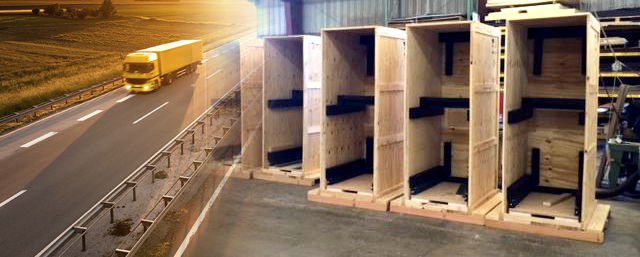5 Things You Need To Know About Shipping Rack Server Crates
7 January 2015

This is the first in a series of blogs about the art and science of safely crating and shipping server racks. Our intention is to start with a brief overview which we will follow with more detailed blogs about specific areas we consider essential at Larson Packaging Company. As many of you already know, the demand for cloud computing and storage devices is experiencing exponential growth, a trend that is predicted to continue into the foreseeable future. The goal of this series is to provide information that promotes safe transport and delivery of this valuable equipment. To that end, we recommend the following basics:
1. Select a packaging and crating company with server rack experience. Inquire about the depth of that experience. Ask about the number of shipments and the variety of destinations. Have they prepared packaging for custom orders? What problems, if any, have they encountered and how were they resolved? Do they find ways to engineer the best solution or do they always just follow rules of thumb?
» Read More International Packing and Crating Compliance: China
2. Don’t underestimate the importance of good design. While custom crates built to house servers may not appear as objects of beauty, to withstand the vagaries of transit, they must still contain elements of fine engineering and elegant design. It’s easy to think that every server rack is basically the same when in fact there can be considerable variation in actual dimensions, robustness, configurations and sensitivity. In other words, one crate does not fit all. If you want your equipment to be properly protected, invest in a quality design and engineering team.
{{cta(‘fd5476ec-6e06-4afd-8467-63f5554e512f’)}}
3. Take the whole journey into account. It’s not just about shipping. You also need to take loading and unloading into account when using rack crates to deliver your product. To make this easier, some vendors offer tool-less designs for quick access—this also eliminates the threat of losing critical tools during transit. Your shipping crates should be designed with a safe and intuitive unloading procedure to accommodate limited numbers of personnel on the receiving end. Hinged doors and rear-access panels make the process a lot more manageable, which saves everybody precious time in the end.
» Read More A Primer on Industrial Crates
4. Think cost-per-trip, not cost-per-crate. Encourage and educate your buyers to think long-term about the product and service they are purchasing. The least cost wooden packing crates may not in fact, be the most economic or rational choice to make. Another reason why design considerations are so important, is that higher quality materials may be used many times while lesser cost alternatives will need to be trashed after one shipment. A quality server rack crate that can be refurbished and reused, can actually result in a cost-per-trip that is 50% to 70% less than a single use crate shipment.
» Read More Refurbishing Wood Crates – Combining Economics and Sustainability
5. If in doubt, request a test. A quality packaging and shipping company should be more than willing to test for the load requirements of your particular shipment. Often this can be done on the company premises or arrangements can be made to go to a certified test site.
For more information on shipping your high value equipment, please contact our staff of professionals at LPC.
{{cta(‘1b96b388-a763-49bf-8bb3-86f9fe58e68a’)}}
